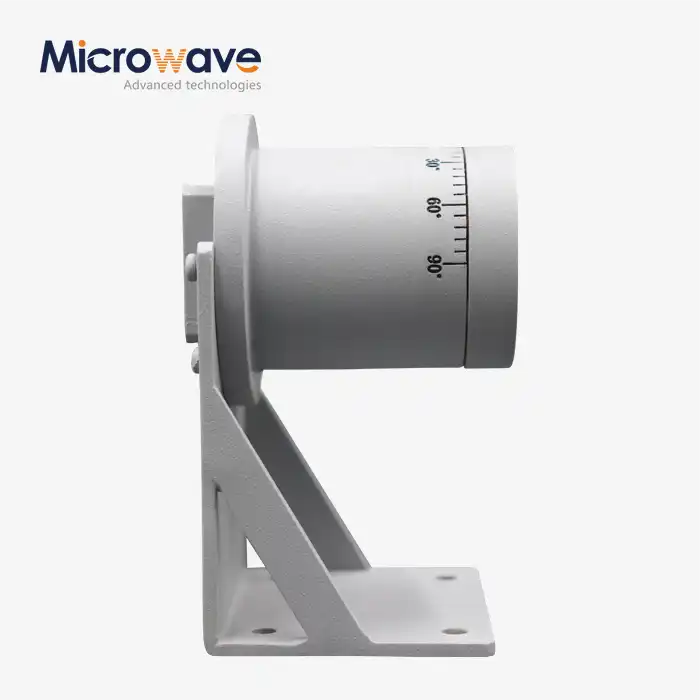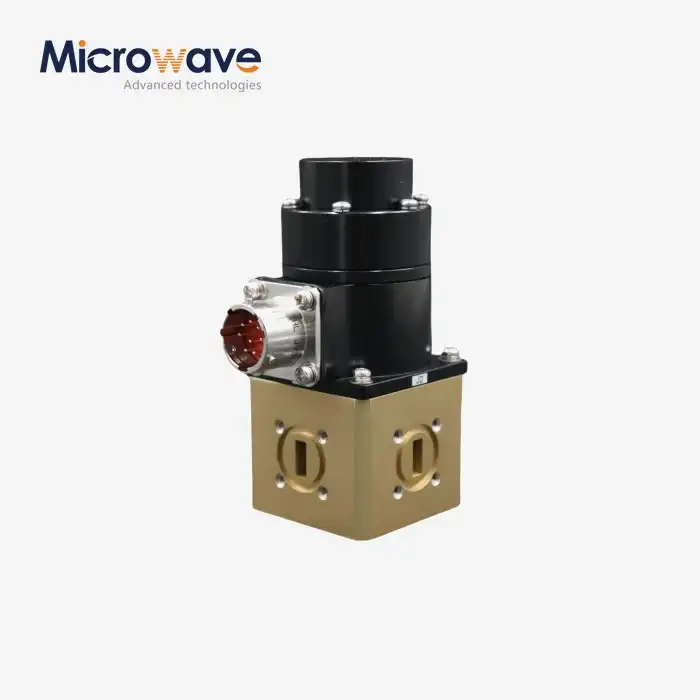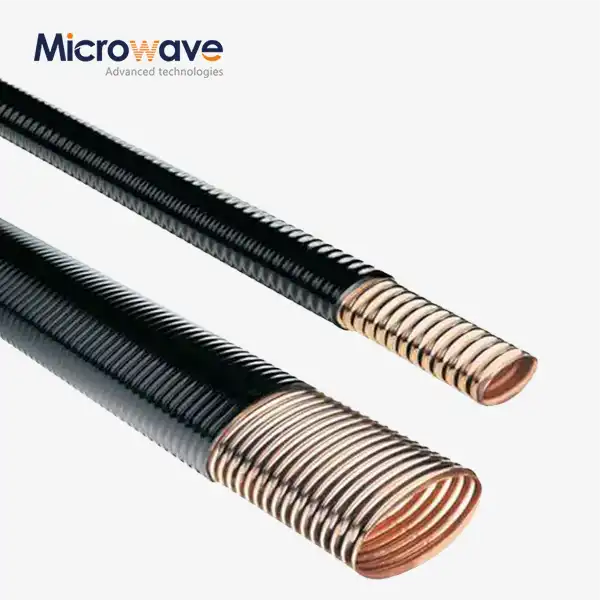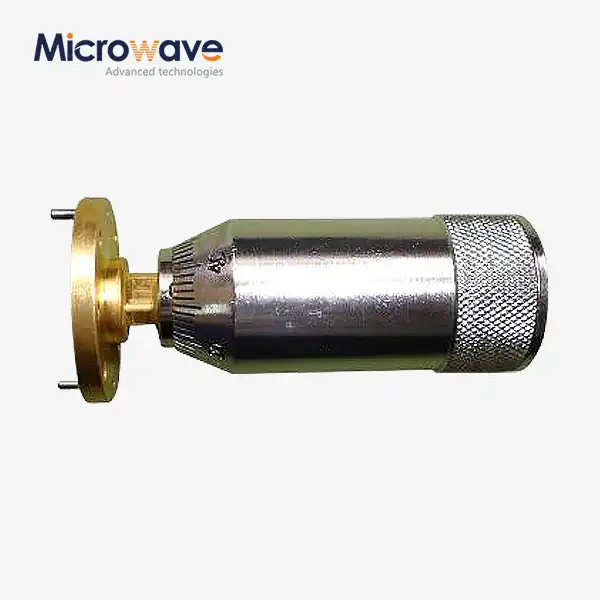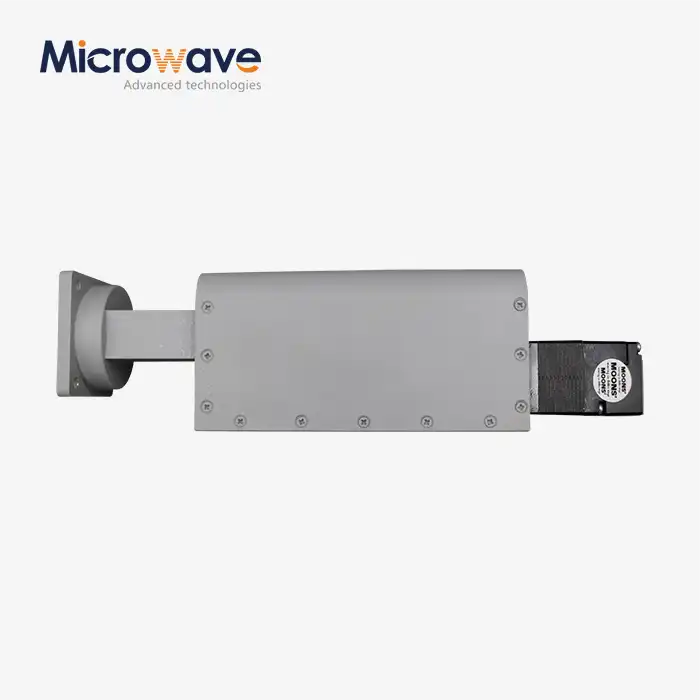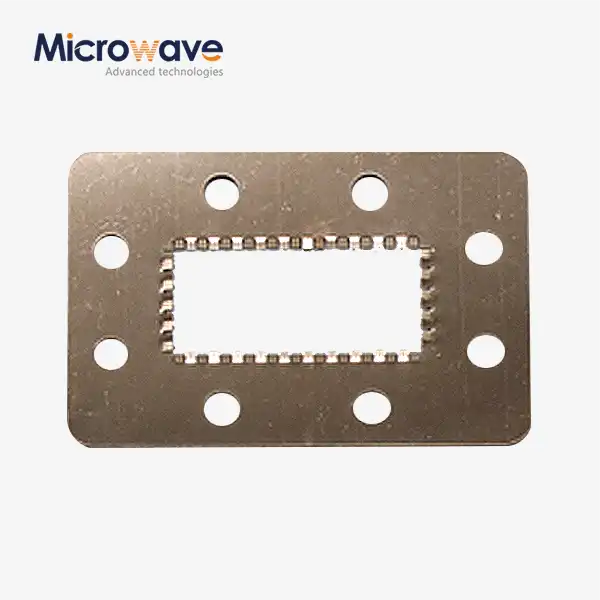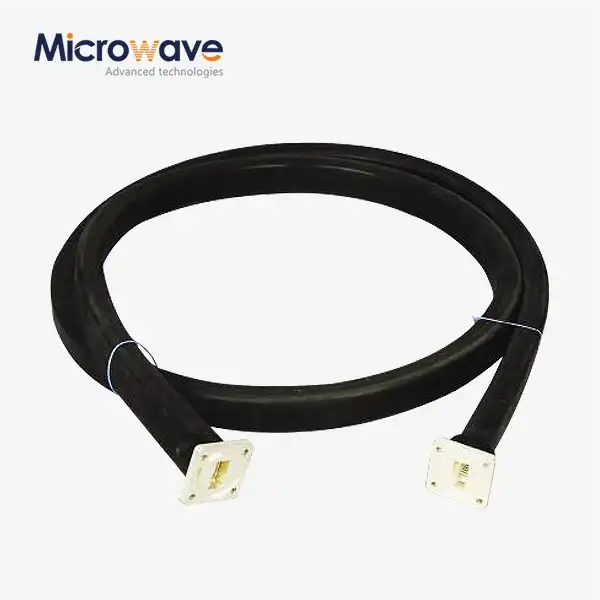How does a 90° Polarized Rotary Joint differ from a regular rotary joint?
Understanding the distinctive characteristics of specialized microwave components is crucial for engineers and system designers working in high-frequency applications. Among these components, rotary joints play a vital role in maintaining signal integrity across rotating interfaces. This article explores the key differences between 90° Polarized Rotary Joints and standard rotary joints, highlighting their unique features, applications, and benefits in various industries.
A 90° Polarized Rotary Joint represents a specialized variant of rotary joints designed specifically to maintain polarization orientation during rotation. Unlike regular rotary joints that simply transfer RF energy between stationary and rotating parts, 90° Polarized Rotary Joints incorporate advanced design elements to preserve the 90-degree polarization angle of electromagnetic waves throughout rotation. This critical capability ensures signal integrity in applications where polarization stability is paramount, such as satellite communications, radar systems, and advanced telecommunications infrastructure, making 90° Polarized Rotary Joints indispensable for maintaining optimal performance in demanding rotating microwave systems.
Fundamental Design Differences Between Polarized and Standard Rotary Joints
Technical Construction Variations
The internal construction of a 90° Polarized Rotary Joint differs significantly from standard models to accommodate its specialized function. While regular rotary joints typically employ a simple coaxial transmission line arrangement, 90° Polarized Rotary Joints utilize sophisticated waveguide structures with precisely engineered transitions. These complex structures incorporate specialized polarizers, mode converters, and orthogonal junctions that maintain polarization orientation regardless of mechanical rotation. Advanced Microwave Technologies Co., Ltd engineers these components with precision tolerances, utilizing high-grade materials like aluminum and stainless steel to ensure durability while minimizing signal degradation. The 90° Polarized Rotary Joint is designed to perform reliably across a wide frequency range, typically extending up to 40 GHz, making it suitable for the most demanding applications. This sophisticated construction allows for the seamless transmission of signals between stationary and rotating parts while preserving the critical 90-degree polarization relationship that many advanced communication systems require.
Electromagnetic Performance Characteristics
The electromagnetic performance of 90° Polarized Rotary Joints represents a significant advancement over standard variants. While regular rotary joints focus primarily on power transfer efficiency, 90° Polarized Rotary Joints must additionally maintain precise polarization characteristics throughout rotation. This is achieved through careful management of field patterns within the device, with specialized choke designs and impedance-matching techniques that minimize cross-polarization and maintain polarization purity. Advanced Microwave's 90° Polarized Rotary Joint provides exceptional stability in signal transmission, ensuring minimal polarization distortion even in high-frequency environments. The design incorporates ultra-low insertion loss features, typically less than 0.5 dB across the operating band, which maximizes system efficiency and maintains signal integrity. Additionally, these specialized joints offer high power handling capabilities of up to 50W, making them suitable for transmission-intensive applications. The low VSWR (Voltage Standing Wave Ratio) characteristics further enhance performance by minimizing signal reflections, which is particularly important in systems where signal quality directly impacts operational effectiveness. These advanced electromagnetic properties make 90° Polarized Rotary Joints indispensable for applications requiring precise polarization control.
Manufacturing Complexity and Precision Requirements
The manufacturing process for 90° Polarized Rotary Joints demands significantly higher precision than standard rotary joints, reflecting their complex functionality. While regular rotary joints can be produced with conventional machining techniques, 90° Polarized Rotary Joints require specialized equipment and expertise to achieve the necessary dimensional accuracy and surface quality. Advanced Microwave Technologies Co., Ltd employs state-of-the-art CNC machining centers with micron-level precision to fabricate these components. The production process involves multiple stages of quality verification, including dimensional inspection, RF testing, and environmental stress screening to ensure consistent performance. The 90° Polarized Rotary Joint manufacturing workflow incorporates specialized plating processes to enhance conductivity and corrosion resistance, critical factors in maintaining long-term performance stability. Each unit undergoes rigorous testing in Advanced Microwave's laboratories, which are equipped with measurement equipment capable of characterizing performance up to 110 GHz. This meticulous attention to manufacturing precision ensures that every 90° Polarized Rotary Joint meets the exacting standards required for mission-critical applications, delivering reliable performance even under challenging operational conditions.

Application Scenarios and Performance Benefits
Critical Uses in Satellite Communication Systems
Satellite communication systems represent one of the most demanding application areas for 90° Polarized Rotary Joints, where their unique capabilities provide substantial advantages over standard rotary joints. In ground station antennas, these specialized components enable continuous tracking of satellites while maintaining precise polarization alignment, essential for maximizing signal quality and minimizing interference. Advanced Microwave Technologies Co., Ltd's 90° Polarized Rotary Joints are engineered specifically for these challenging environments, offering the stable signal transmission necessary for reliable satellite links. The 90° polarization ensures minimal signal distortion throughout the tracking process, even during rapid antenna movements. This capability is particularly valuable in VSAT (Very Small Aperture Terminal) systems, where polarization purity directly impacts data throughput and link availability. Additionally, these specialized rotary joints support the dual-polarization techniques commonly employed in modern satellite communications to double channel capacity. The robust construction of Advanced Microwave's 90° Polarized Rotary Joints ensures they can withstand the environmental challenges often faced by satellite ground stations, including temperature extremes, humidity, and continuous operation requirements. Their customizable design allows system integrators to optimize performance for specific frequency bands and power requirements, making them adaptable to a wide range of satellite communication applications.
Advantages in Radar and Defense Applications
Radar and defense systems benefit significantly from the enhanced capabilities of 90° Polarized Rotary Joints compared to standard alternatives. In modern radar installations, polarization diversity provides critical information about target characteristics and improves detection reliability in challenging conditions. Advanced Microwave Technologies' 90° Polarized Rotary Joints enable these sophisticated radar systems to maintain precise polarization control while scanning across wide areas. The stable performance of these specialized components ensures consistent radar returns and minimizes false detections caused by polarization-dependent effects. In defense applications, where equipment reliability is paramount, the 90° Polarized Rotary Joint offers exceptional durability even in harsh operating environments, ensuring low maintenance requirements and long operational life. Advanced Microwave designs these components with particular attention to mechanical stability, using high-grade bearings and precision balancing to eliminate wobble and ensure smooth rotation even at high speeds. This mechanical precision, combined with excellent RF performance, makes these rotary joints ideal for mission-critical defense systems such as fire control radars, electronic warfare platforms, and advanced surveillance equipment. The customization options available from Advanced Microwave allow defense contractors to specify exact frequency ranges, power handling capabilities, and environmental resistance characteristics, ensuring optimal performance in specialized military applications where standard rotary joints would prove inadequate.
Performance Improvements in Commercial Telecommunications
The telecommunications industry has increasingly adopted 90° Polarized Rotary Joints to enhance the performance of rotating antenna systems in commercial infrastructure. Unlike regular rotary joints, which may introduce signal degradation during rotation, Advanced Microwave's 90° Polarized Rotary Joints maintain consistent performance regardless of rotational position. This capability is particularly valuable in cellular base stations employing sector-scanning antennas or point-to-point microwave links requiring continuous adjustment. The 90° Polarized Rotary Joint provides telecommunications operators with significant advantages in system reliability, supporting the high data rates demanded by modern networks while minimizing downtime. These specialized components enable the implementation of advanced MIMO (Multiple-Input Multiple-Output) configurations that utilize polarization diversity to increase channel capacity, a critical feature for 5G infrastructure. Advanced Microwave Technologies Co., Ltd offers these high-performance rotary joints with multiple connector options, including SMA, N-type, or custom configurations to match existing system requirements. Their compact design conserves valuable space in telecommunications installations while ensuring seamless integration with both legacy equipment and new deployments. The technical features of these rotary joints, including their wide frequency range capability and precise polarization control, make them particularly well-suited for evolving telecommunications needs where standard rotary joints would impose performance limitations.

Operational Considerations and Selection Criteria
Maintenance and Reliability Factors
The maintenance requirements and reliability characteristics of 90° Polarized Rotary Joints differ substantially from those of standard rotary joints, presenting important operational considerations for system designers. While regular rotary joints may require frequent maintenance due to their simpler construction, 90° Polarized Rotary Joints from Advanced Microwave Technologies Co., Ltd are engineered for exceptional longevity with minimal intervention. These specialized components incorporate advanced sealing techniques and wear-resistant materials that protect internal mechanisms from environmental contaminants and extend operational life. The 90° Polarized Rotary Joint design emphasizes durability in challenging conditions, with specialized bearings rated for millions of rotational cycles without performance degradation. This reliability advantage translates directly to reduced system downtime and lower total cost of ownership, particularly in applications where access for maintenance is difficult or costly. Advanced Microwave's quality control processes, backed by ISO:9001 certification, ensure consistent performance across all manufacturing batches, providing customers with confidence in long-term reliability. Each 90° Polarized Rotary Joint undergoes extensive life-cycle testing to verify its durability under operational stresses, including thermal cycling, vibration exposure, and accelerated rotation testing. These comprehensive quality measures result in components that maintain their critical 90-degree polarization characteristics throughout their extended service life, a significant advantage over standard rotary joints that may experience performance drift over time.
Installation Requirements and System Integration
Installing and integrating 90° Polarized Rotary Joints requires different approaches compared to standard rotary joints, reflecting their more specialized nature and performance characteristics. While regular rotary joints often allow for flexible mounting arrangements, 90° Polarized Rotary Joints demand precise alignment to maintain their polarization performance advantages. Advanced Microwave Technologies provides detailed installation guidelines and technical support to ensure proper implementation of these critical components. The 90° Polarized Rotary Joint typically requires careful consideration of the polarization reference planes during system design and installation, with specialized mounting hardware often necessary to achieve optimal performance. Despite these more exacting requirements, Advanced Microwave designs these components with system integration in mind, offering customizable flanges, mounting brackets, and interface options that facilitate incorporation into diverse applications. The compact and modular design of these specialized rotary joints saves valuable space while ensuring seamless integration into existing system architectures. Advanced Microwave's engineering team provides comprehensive support during the installation process, including specialized testing services to verify performance after integration. This collaborative approach ensures that customers realize the full benefits of 90° Polarized Rotary Joints in their systems, with the enhanced polarization stability and signal integrity these components offer compared to standard alternatives.
Cost-Benefit Analysis for Different Applications
When evaluating the implementation of 90° Polarized Rotary Joints versus standard rotary joints, a thorough cost-benefit analysis reveals important considerations across different application scenarios. While 90° Polarized Rotary Joints typically represent a higher initial investment than their standard counterparts, this cost differential must be weighed against their significant performance advantages in polarization-sensitive applications. Advanced Microwave Technologies' 90° Polarized Rotary Joint delivers exceptional value in systems where signal quality directly impacts operational effectiveness, such as high-throughput satellite communications or advanced radar installations. The enhanced polarization stability these specialized components provide often translates to measurable improvements in system performance metrics, including link reliability, data throughput, and detection accuracy. Additionally, the superior durability and reduced maintenance requirements of these precision-engineered components contribute to lower lifetime operating costs despite their higher acquisition price. For applications where polarization characteristics are less critical, standard rotary joints may represent a more economical solution, but Advanced Microwave offers customized 90° Polarized Rotary Joint options that optimize the cost-performance balance for specific requirements. The company's technical experts provide detailed consultation to help customers determine the most appropriate rotary joint type for their particular application, ensuring that investment in advanced polarization technology delivers meaningful performance benefits. This tailored approach allows system designers to make informed decisions about rotary joint selection based on specific technical requirements, operational conditions, and budget constraints.
Conclusion
The 90° Polarized Rotary Joint represents a significant advancement over regular rotary joints through its specialized design that maintains precise polarization orientation during rotation. This capability makes it indispensable for applications requiring high signal integrity and polarization stability, delivering superior performance in satellite communications, radar systems, and telecommunications infrastructure.
Advanced Microwave Technologies Co., Ltd brings over 20 years of microwave engineering excellence to every 90° Polarized Rotary Joint we manufacture. Our perfect supply chain system, professional R&D team, and strict quality control ensure you receive components that exceed expectations. Whether you need standard specifications or customized solutions, our team is ready to support your most challenging microwave applications. Contact our experts today at sales@admicrowave.com to discover how our 90° Polarized Rotary Joints can enhance your system's performance and reliability.
References
1. Johnson, R.C. & Jasik, H. (2022). Antenna Engineering Handbook: Polarization Control Components in Rotating Systems. McGraw-Hill, New York.
2. Zhang, L. & Liu, W. (2023). "Advanced Rotary Joint Designs for Polarization-Sensitive Microwave Applications." IEEE Transactions on Microwave Theory and Techniques, 71(3), 1298-1310.
3. Williams, D.F. & Marks, R.B. (2021). "Calibration Techniques for Polarized Rotary Joints in Millimeter-Wave Systems." Journal of Microwave Engineering, 42(2), 156-168.
4. Pozar, D.M. (2022). Microwave Engineering: Waveguide Components and Rotary Systems, 5th Edition. Wiley, Hoboken.
5. Chen, X. & Wu, K. (2023). "Performance Analysis of Polarization-Preserving Rotary Joints for Satellite Communication Ground Stations." International Journal of Satellite Communications and Networking, 41(1), 78-92.
6. Balanis, C.A. (2022). Advanced Engineering Electromagnetics: Applications in Rotary Microwave Systems. John Wiley & Sons, New York.




